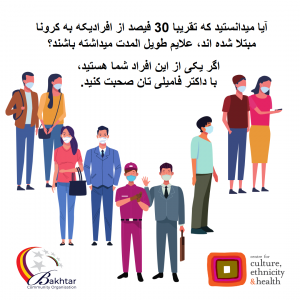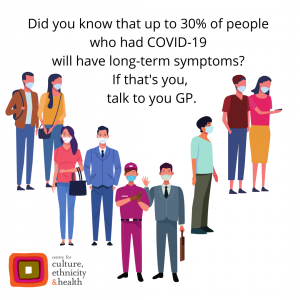

With more than 50,000 Australians currently being infected with COVID every day, the risk of Long COVID looms large for many. Around 5% of vaccinated people (one in twenty) end up with long-term symptoms (it at least doubles for those who are not vaccinated). While this may seem low, at the current rate of infection, this means 2000 to 3000 new cases of Long COVID a day. Since the beginning of the pandemic, over 9 million Australians have been infected – 90% of them this year only. Experts predicts that half a million Australians will get Long COVID in the coming months.
As well as the impact of individual lives, there is great concern about the cost of this to the public health system.
To meet the World Health Organisation’s definition of Long COVID (or “Post COVID-19 Condition”) a person must have symptoms three months after a confirmed COVID infection, with those symptoms lasting for at least two months and not able to be explained by an alternative diagnosis. With over 200 symptoms, Long COVID is difficult to diagnose as it resembles other conditions. Diagnosing it requires many tests to eliminate other possibilities. Most common reported symptoms are extreme fatigue, difficulty breathing, constant headache and ‘brain fog’.
Women aged in their 40’s and 50’s are more at risk than any other population group.
In partnership with CALD communities, CEH has produced simple resources in over 20 languages to raise awareness about Long COVID and encourage people experiencing symptoms to consult their GP. Resources include videos, interviews with health professional in languages other than English, audio material and social media tiles that can be circulated on a range of platforms. Social media tiles in 4 Pasefika languages have just been added.
You can find all the resources on CEH’s Resource Hub.
